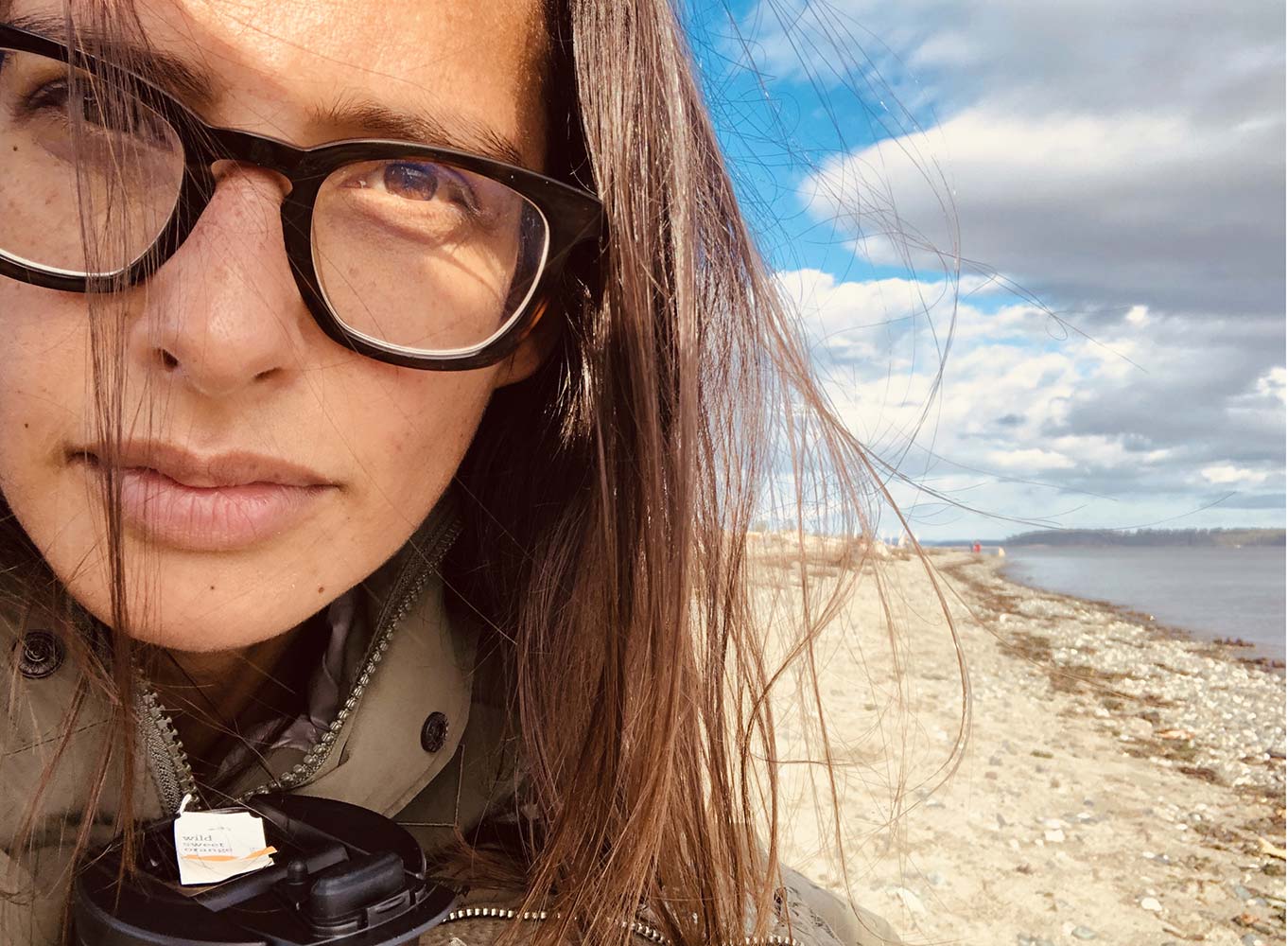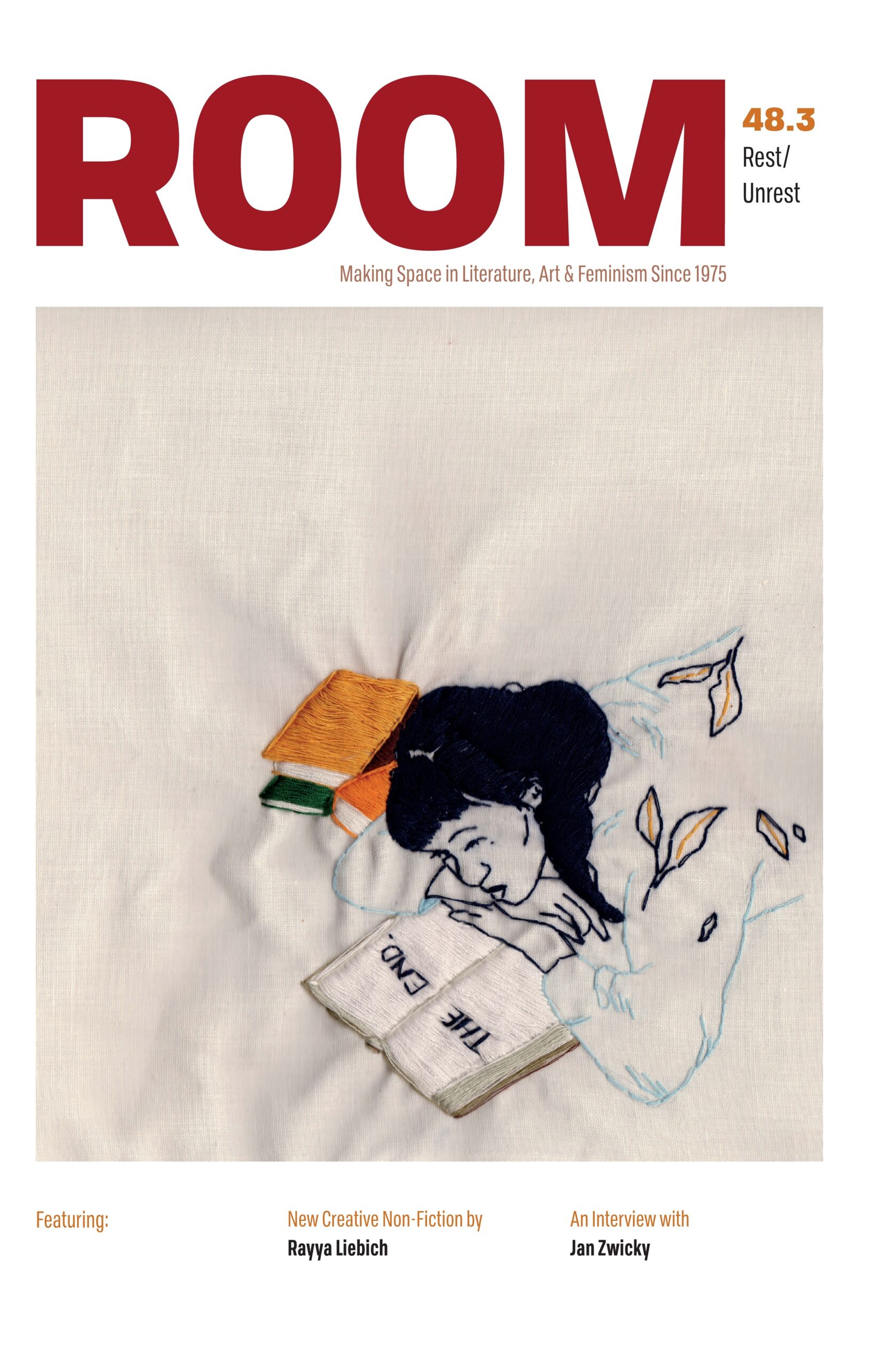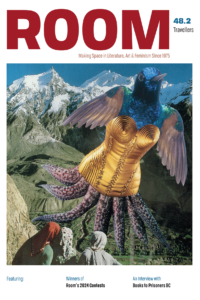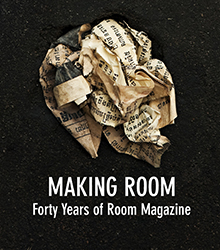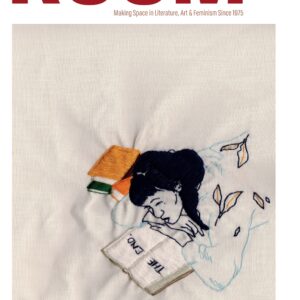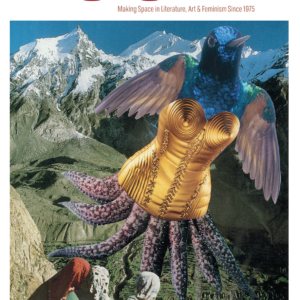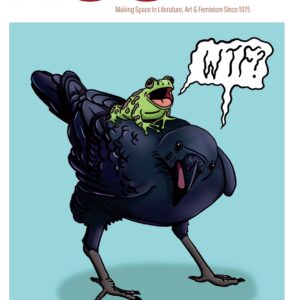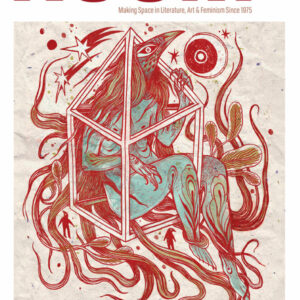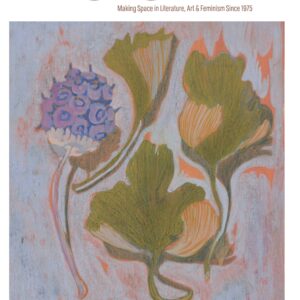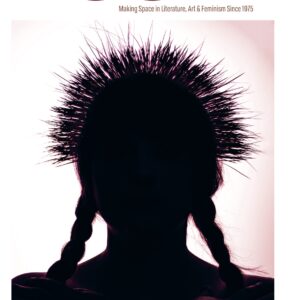“Dazzle Camouflage” is the honourable mention for Room‘s Creative Non-Fiction Contest 2019. Here’s what the judge, Terese Marie Mailhot, has to say about the essay: “‘Dazzle Camouflage’ was full of beautiful language and the depth of the work was wonderful to sit with. It was personal and cerebral and the voice within the work felt poetic and full. What does it mean to inhabit an identity or be part of a larger community and shared history? It’s a beautiful essay looking closely at the self.”
Dazzle Camouflage: Unlike other forms of camouflage, the intention of dazzle is not to conceal, but to make it difficult to estimate a target’s range, speed, and direction. Designed by Royal Marine Norman Wilkinson to defend British merchant ships from German U-Boats in the First World War. Wilkinson, a trained painter, realized, one cannot hide a merchant ship in the ocean from a U-boat, they are simply too big (and if nothing else the smoke stacks will give them away). But one can disguise it, making its distance impossible to judge by painting broad black and white lines, thick zig zags, odd angles, and intersecting triangles that dazzle and confuse the eye. Cubist visions of angles and stripes, like a Picasso at sea. Razzle dazzle, break up the ship’s form and confuse the one taking aim. Hide them in plain view.
“What kind of Indian are you?” my third-grade teacher asks, calling me out from the table group where I sit with my friends. I am now standing in front of her, my arms straight by my side, my hands awkwardly fiddling with the hem of my shirt.
How many kinds of Indians are there? I go blank. I do not know what kind I am.
I want to be the good kind. I suspect there is a good kind and a bad kind from the way she asks. But I do not know what defines each. I stare blankly, and she grows impatient with me.
She stands in her crisp linen wide-legged trousers by the cutting station. Her metre stick presses in her palm. Her burgundy lip stick is perfectly applied, much darker than any other teachers in the school, her lips pressed into a thin line. Her hair, dark, straight, and short, sits at her jawline. It is greying slightly. She was the one out of place compared to the rest of the teachers—older, stricter, better dressed, thick accent, other.
If I misspeak, and do not deliver the answer she wants, I go to the lower table group. (Our class has been divided into two long rows, the highly capable, and the less so, and we know which one we are). I don’t want to be demoted from my friends, to be singled out as lesser, to be singled out at all. So, I stand without answering. If I don’t answer, I can’t be wrong. Though I am not the type of child who wants to hide. I am loud amongst my friends. I know the answers to questions about maps and spelling, and even with this bullish teacher, I often extend my arm out of its socket when I raise my hand to be called on and show my cleverness. I do not want to answer this question, though, because I do not know the answer. I feel the eyes of my friends, blue, green, and hazel, on me as they sit in our table group, and I stand, shifting imperceptibly in my sneakers. The damp heat rises from cocoon-like snow suits drying at the side of the room, and I wish I could disappear into my snowsuit rather than be stood here, facing this woman.
~
I am the kind of Indian whose father is a packrat. When you come into the world with nothing, you hang on to what you get along the way.
He will tell me years later that he was carried naked like a monkey in the arms of his mother for days. They walked for miles under the hot sun on dusty roads that, as of 15 August 1947, belonged to Pakistan, onward toward land that was still India. Two older children—my aunt and uncle—and a cow crossed the scorched, cracked earth with them. The dust covered their unshod feet and settled in the cracks of skin, cut, sunburnt, and blistered. My grandfather went ahead.
Have you ever been to India? That’s how I picture the earth in the Punjab, dry and ochre. English demands similes to render description poetic and vivid, but I don’t know what the land in that North Western region on India was really like when the line in the sand was drawn. I’ve never been to India, and Googling images of “Punjab Landscape” shows flatter, greener farmed fields with longer, straighter roads than I imagined. They walk and walk, that much I know. My grandmother carrying my infant father, and both children all walk. She is a small woman, not five feet tall, and her long hair pulled in a bun is starting to grey on this journey. The children, well-dressed at the start of this journey in silk or cotton tunics and jodhpurs, become caked in dust, dirt, and sweat, their garments no longer true to their former position.
I’ll hold onto this idea of my grandmother’s legs, short and rounded but still walking, when I give birth to my daughter, thinking what is the pain of a contraction if my grandmother walked for days carrying my infant, refugee father with hardly any water, little food, few possessions? They lose everything. They lose land and a large farm. Any previous wealth is meaningless now after this walk. Trainloads of fleeing Sikhs and Hindus pass, traveling toward India, and the fleeing Muslims are moved toward Pakistan. Riots and gangs leave many bloody, beaten, raped, killed. No one speaks of it in the family ever again.
They will stay in the Punjab for only a few years, before picking up again, and taking a boat through the Suez Canal to dock at Liverpool.
We celebrate my father’s birthday in November, but we are unsure of his actual birthdate. His birthday must be earlier in the year, because Lord Mountbatten drew the Radcliffe line in the summer as the British pulled out of a collapsing colonial empire. New documents were fabricated when they docked at Liverpool several years later, so that the children, now four of them, could say they were younger and start earlier in a British school system where they had to learn English. He will sit in his classroom as bottles of milk are handed out, and will lean over placing his mouth on the straw like the other children do. Unsure of what to do, he will blow into the straw until large bubbles spill over and reveal his error.
I am the kind of Indian who returns to England for the first time aged ten, after I have become Canadian with a West Coast drawl. My brown skin and accent will now confuse strangers I meet in this country I was born in, who when they hear the world Indian coupled with my voice, now think, like Pocahontas? No, Indian Indian, I will correct. On this first trip back, we sit in my grandparents’ front room, small and hot in the centre of Leicester with their vegetable patch yielding dusty squares of raised beds of onions and garlic in the back. Cricket plays on the television for hours, and we stare at it with sweat making our thighs slippery in this English heat wave, longing to leave this sofa but aware we are meant to be spending time with elderly grandparents, one of whom speaks no English. An auntie presents plates of samosas with ketchup, but the stifling living room makes it too hot to eat. We should be good family members and the ketchup has been dolloped instead of chutney for our benefit. A photo album appears and is presented in its thick black leather to my father. “Ramesh Dhillon, this is your life!” my grandfather announces with ceremony, as the book is handed to my father. School photographs, report cards, trips to the seaside unfold. My brother and I exchange a look that says Who is Ramesh? as we realize the name by which we know our father is not in fact his name but an Anglicized shield he took to pass, as this Midlands city was flooded with British citizens from the Subcontinent after the Partition.
I am the kind of Indian whose father was born a Sikh baby, but who went to a Church of England grammar school in an industrial city in the Midlands. Dirty brick buildings, hosiery factories, and grey circling ring roads construct the industrial greyness that is Britain after the war. He would marry white and move continents again. He would weep for the death of his mother by sitting and praying in a Catholic cathedral in a city built on land that was taken from other people who were mistaken for Indians. He keeps scraps of paper, junky furniture, out-of-date text books and manuals for software no longer in use, hanging on to anything having lost everything once. The partition ripples. And so, I am the kind of Indian who can speak only English, because my father thought he was giving me an advantage in masking out the Punjabi from my tongue.
I am the kind of Indian who in junior high brings her friends home from school for lunch, the hems of our jeans soggy from the slushy February snow. We’ve trudged, heads down in the bitter Canadian winter wind, through a passage carved by footprints in the field over the course of the winter. My father’s pale blue Mazda minivan is in the drive, so I push the front door gently. He has come home for lunch from the bank, where he works at a job he hates down the highway toward town. I lift my nose and sniff the air, taking a deep breath in through my nostrils. My friends knock the slush off of their boots on the threshold and kick them haphazardly on the mat.
I hope the smell of his cooking isn’t going to put my friends off from coming to my house, and choose a friend’s further up the road. The smell of his cooking is from somewhere other, giving away that I do not have grandparents who have been here for generations, or at least one generation, who knew to make normal food to have at lunch in winter: macaroni and cheese or salty, thin tomato soup from a can with buttered grilled cheese, the yellow plastic melting out as you bite down. His food smells of pungent exotic spices, mixing sweet tamarind with the cinnamon of an earthy masala recalling his long walk and create a lingering odour that embeds into the fabric of the sofa.
No, that’s a lie. I’m lying again. His food is other, but not like that. Not a curry, but the Full English. The odorous cloud is made of melted margarine, rising from a chemical yellow pool in the pan in which fatty, cheap bacon sizzles with two eggs, grease dancing on their white, rubbery surface. In the same pan a mush of baked beans, and a watery tomato cut in half, sitting like a blood clot, are laid upon two toasted slices of white bread. The grease and tomato juice make the bread a saturated white sponge. It is not the smell of garam masala that lingers in the white mottled wallpaper, but of evaporating margarine. It leaves a fatty residue in the air like the coagulating grease that would slowly gather in his pulmonary artery like cars lining up for a ferry, building a small wall of blockage that would later cause his first heart attack at fifty-two, when I am working in London and am summoned to fly home.
I am the kind of Indian who comes home from school in the afternoon and watches The Facts of Life. I imagine myself slipping out of my skin, and when I am older, in high school, I will stand at a bathroom mirror getting ready for a school dance, singing into a hairbrush for a microphone. But the self I imagine has a blond perm like Blair, and not the glossy black hair I am born with.
~
She stands there, waiting for my answer. My friends have finished our group assignment and a murmur of boredom rises from the table. My stomach growls, as I think about my ham sandwich that sits sweating and anaemic in my lunchbox. I don’t know how to answer. If I don’t answer, I can’t be wrong, and if I’m not wrong, I can’t be ridiculed and placed on the lower table group. The adrenaline forms a lump in my throat, blocking any sounds from coming out. She laughs, cruelly, at me not knowing.
How can she even know to ask?
I don’t think she has ever seen my father, because I walk to school with my brother. My father rarely drops me off unless it is twenty degrees below freezing, and then he doesn’t leave the truck but drops us at the edge of the school parking lot on the road. He wouldn’t have attended a parents’ evening, my mother, who is white, comes to those alone. On multi-cultural night we brought a trifle, the English dessert of sponge cake set in fruit and red Jell-O, layered with vanilla custard and whipped cream, and topped with slivered almonds, and not samosas or pakora, greasy on the brown paper they sit in, because we do not eat them at home.
Is it my brown skin, which goes very dark in the hot summer sun of this arid desert climate in the foothills to the Rocky Mountains? If it is my skin, how does she know it is Indian, and not Spanish or Egyptian or Colombian. Is it my name? It is a common Sikh surname in the Punjab. There are three in the phone book here in a small town in the foothills to the Rockies in the 1980s. I know because I run my finger down the soft paper following the column from D-E to D-H.
“Well, is he from India?” she asks. She won’t let it go, this pit bull of a woman. She herself is from Singapore, the most dutiful of the colonies. Her first name sounds strange to my eight-year old self. She was the other. And yet, she has singled me out, made me a stranger, recognized as not white, as other. Before I have realized this for myself, she has foisted it upon me.
I think he is the kind of Indian who is from India. I have heard this mentioned, I think, though I am more sure he is from England. It is England where our grandparents live, where I was born, where they grew up, from where packages at Christmas time arrive, to where my mother makes calls to once a week on a Sunday, with the long, spiral phone cord snaking up the wall, from where they long for soap operas set in Northern towns of grey skies and red brick, and for the tea (even though the tea came from India). His accent, I know, is English. The lump of blood pounding in my throat is now too big, it stops my words, and I cannot speak. I nod the smallest gesture, my neck stiffly moving several millimetres up and then down. India, I nod, yes.
Is this the good kind? I don’t know, but she releases me to sit back with my friends, and I slip into my seat without saying anything. Like a ship, I’ll start to move forward, dazzling to get by. Confuse the one taking aim; hiding in plain sight.
